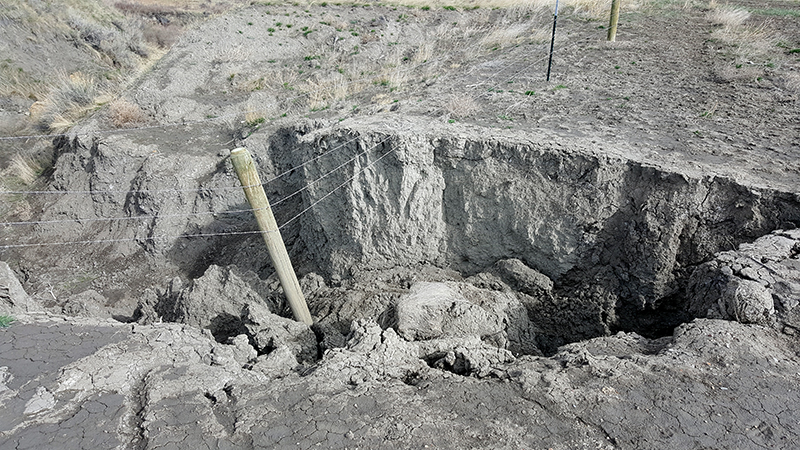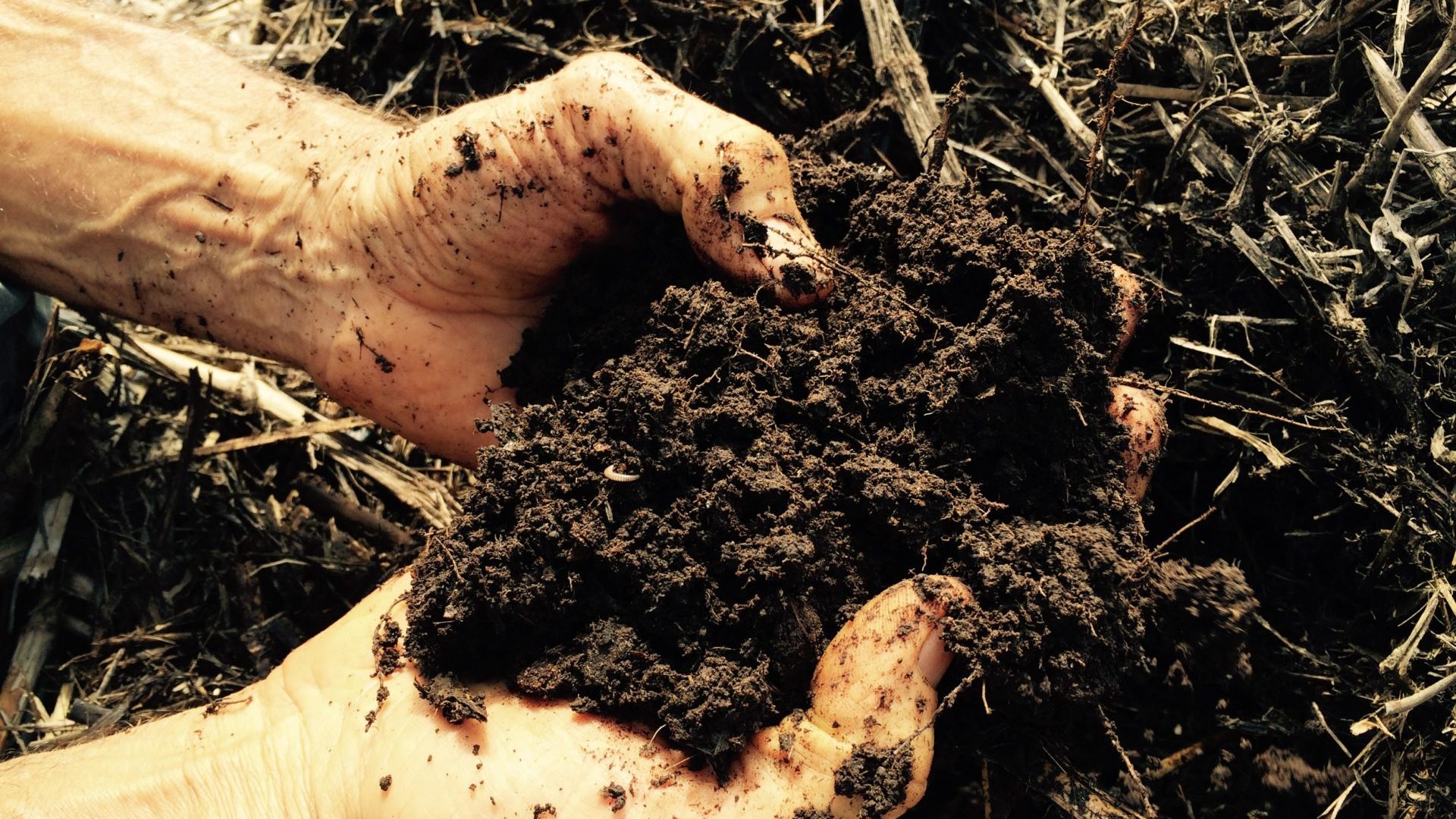The current crop rotation for dry land wheat farmers with a mono-crop one year and bare dirt the next is very susceptible to erosion. The SA Ranch is in (as is most of the northern plains) a windy area of the country and at times it becomes a dust bowl with all the fallow land. Worse than wind though is the cloud bursts of rain. The use of big heavy tractors in fields all the time (all the chemical application) causes compaction just down past where the tilling equipment goes and thus the fields become almost like sluice boxes.
Every year, massive amounts of top soil wash off the SA Ranch (the Natural Resources Conservation Service estimates 4 tons per acre of soil is lost on average annually with traditional farming) and into the Missouri river where it goes to the Gulf of Mexico. There is very little organic matter (less than 1 inch) on the SA Ranch and top soil flies or washes off the ranch every year.
If something does not change, top soil will all be gone at some time in the future. When it is gone, there will be no more farming. In fact, the loss of top soil is burning out farmland across the globe with many countries losing arable land at alarming rates. Land degradation globally is estimated at 10 million hectares annually. Since 1960, it is estimated that 1/3 of the world’s farmland has been lost due to erosion or degradation. This loss of arable land has grave strategic implications for the USA as well global food production.
Modern agriculture does not retain water in the ground for the living roots are not deep if there are any at all. Nature with its bio-diversity and deep root systems retains water. If cropping practices could mimic nature, we would have drought resistant crops that would strategically be important to the stability of the countries food source.


